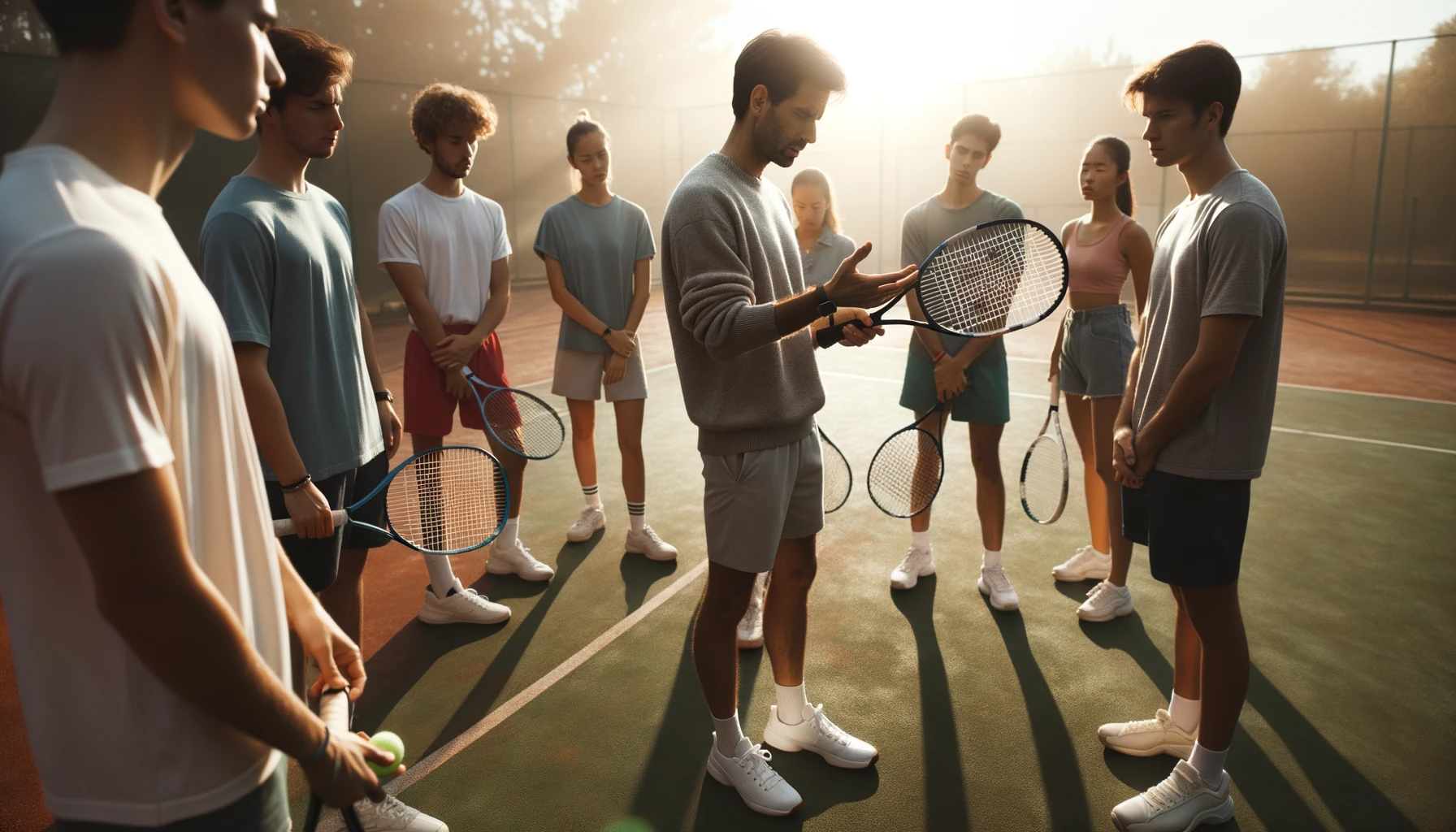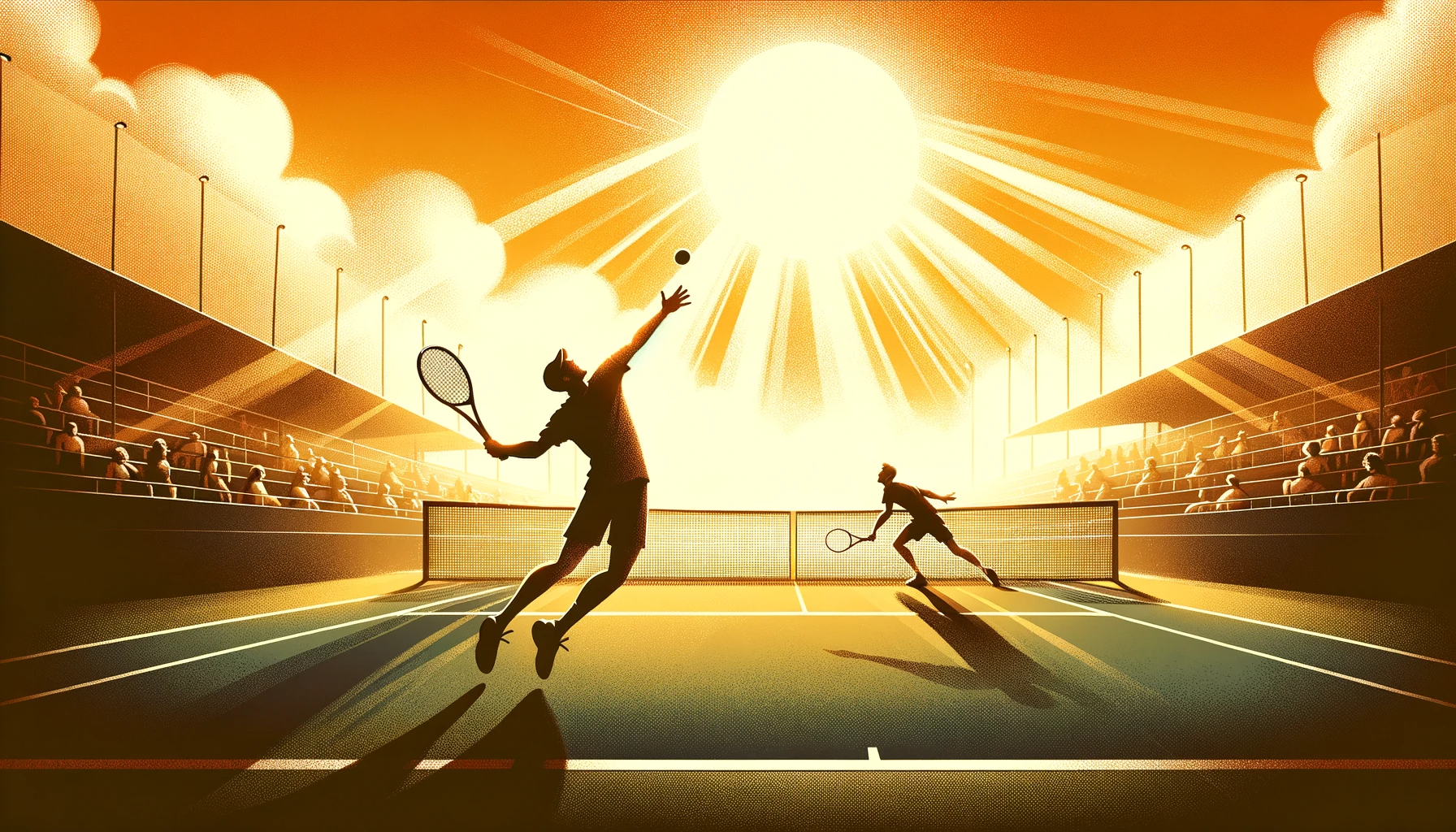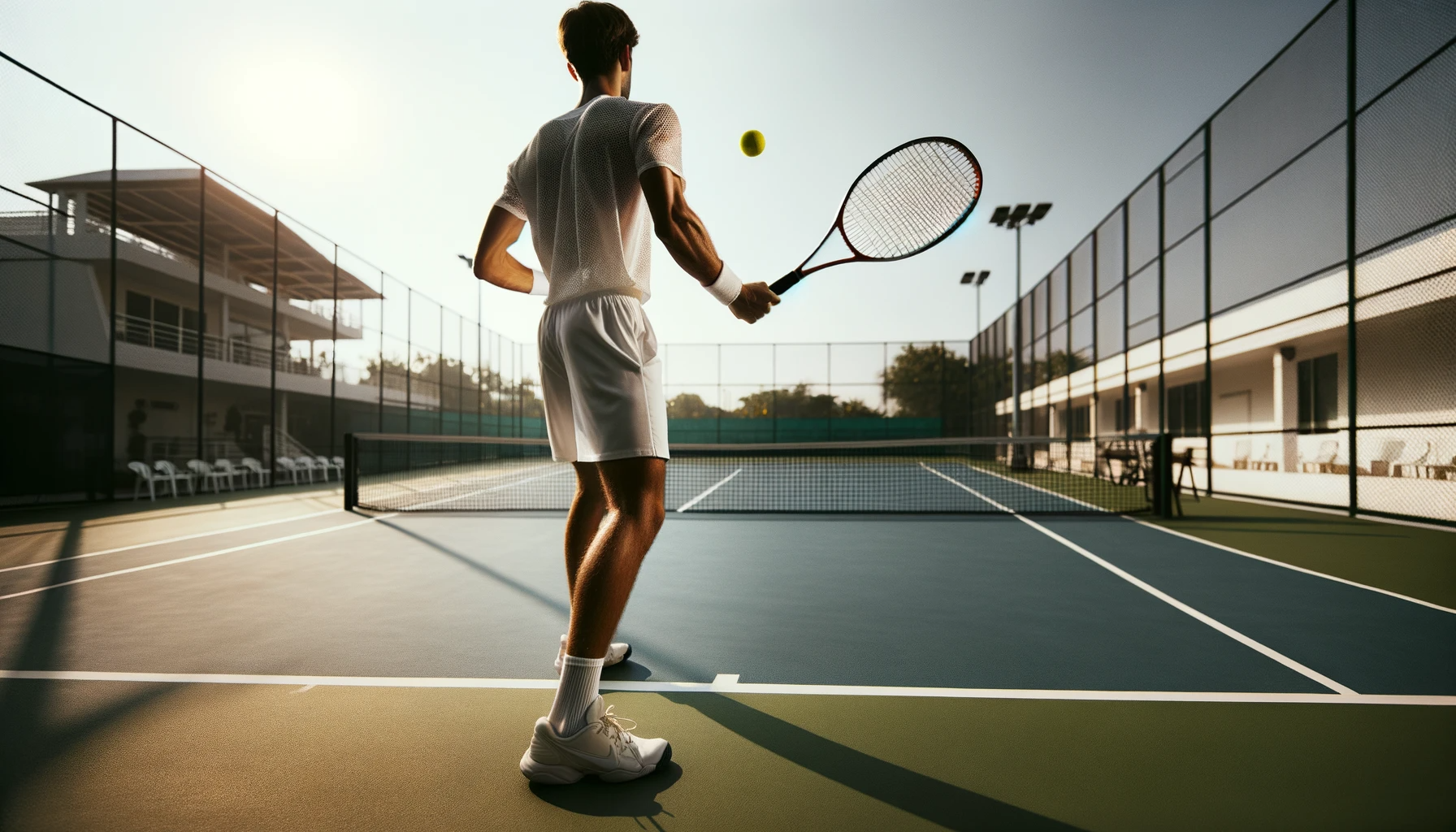In this article, we delve into the realm of tennis coaching, focusing on the essential basics that empower teams to reach new heights.
From mastering grip techniques to honing serving fundamentals, this guide offers a comprehensive overview of the technical, strategic, and motivational aspects of the game.
By equipping coaches with the knowledge and tools necessary to enhance their players’ skills, we aim to foster a deeper understanding and appreciation for the sport while nurturing a culture of excellence.
Key Takeaways
- Grip techniques are important for beginners to find stability and control.
- Serving fundamentals, such as body alignment and ball toss technique, lay the groundwork for a strong game.
- Groundstroke techniques, including footwork, positioning, and topspin, enable players to dominate the game.
- Footwork drills improve overall movement and shot execution, enhancing players’ agility and coordination.
Grip Techniques
Frequently, coaches should instruct their teams on the various grip techniques used in tennis to enhance their players’ performance on the court. Understanding and mastering grip techniques is essential for players to execute powerful shots and maintain control over the ball.
When it comes to forehand variations, the grip plays a crucial role in determining the shot’s power and accuracy. The Eastern grip is generally recommended for beginners as it provides stability and control. However, more advanced players often use the Semi-Western or Western grip to generate topspin and increase the ball’s bounce upon contact. Coaches should encourage players to experiment with different grips during practice sessions to find the one that suits their playing style best.
Similarly, backhand grip adjustments can greatly impact a player’s ability to execute effective shots. The two-handed backhand grip is commonly recommended as it provides stability and allows players to generate power from both arms. However, some players may prefer the one-handed backhand grip for greater reach and flexibility. Coaches should emphasize the importance of proper grip placement and hand positioning to ensure players can generate sufficient power and control during backhand strokes.
Serving Fundamentals
To continue building a strong foundation for their players, coaches should delve into the essential serving fundamentals that can greatly impact a tennis player’s overall performance on the court. Serving is a critical aspect of the game, and mastering the proper techniques can give players a significant advantage.
One of the key elements of a successful serve is proper body positioning. Players should start with a strong and stable base, with their feet shoulder-width apart. This allows for better balance and power generation. The knees should be slightly bent, and the body should be aligned in a sideways position, with the non-dominant shoulder facing the net. This stance allows for a smooth and efficient transfer of energy from the legs and core to the arm, resulting in a powerful serve.
Another crucial aspect of serving is the ball toss technique. The toss should be consistent and accurate, as it sets the stage for a well-executed serve. Coaches should emphasize the importance of a high and slightly in front toss, allowing the player to make contact at the optimal point. A well-timed toss enables players to generate more power and control, increasing their chances of a successful serve.
Mastering serving fundamentals lays the groundwork for a strong game. By focusing on proper body positioning and ball toss techniques, coaches can empower their players to serve with confidence and precision.
These skills will not only enhance their serving abilities but also set the stage for mastering groundstroke techniques, which we will explore in the next section.
Groundstroke Techniques
As coaches continue to empower their teams in tennis, it is essential to delve into the subtopic of groundstroke techniques. Mastering these techniques will greatly enhance the players’ overall performance and enable them to dominate the game.
To excel in groundstrokes, coaches should focus on the following key aspects:
- Rallying Skills: Encourage your players to develop strong rallying skills, which involve consistently hitting the ball over the net and maintaining control during extended exchanges. Emphasize the importance of footwork, positioning, and timing to ensure accuracy and power in their shots.
- Topspin Techniques: Teach your players the art of topspin, a powerful technique that adds spin to the ball, causing it to dip and bounce higher when it reaches the opponent’s side. Mastering topspin allows players to create angles, control the ball’s trajectory, and put their opponents on the defensive.
- Adapting to Different Surfaces: Help your team understand the importance of adapting their groundstroke techniques to different playing surfaces. For instance, clay courts require players to slide and generate more topspin, while grass courts demand flatter shots with less bounce.
Footwork Drills
When developing the skills of their tennis teams, coaches can enhance footwork techniques through a variety of effective drills. Footwork is a crucial aspect of the game as it allows players to move quickly and efficiently around the court, enabling them to reach the ball and set up for their shots effectively.
Lateral movement exercises are particularly beneficial for improving footwork, as they focus on side-to-side movements, which are essential in covering the wide angles of the court. These exercises can include ladder drills, where players move their feet quickly and precisely through a series of ladder rungs, as well as cone drills, where players move laterally between cones placed at varying distances.
Agility training is also important for footwork development, as it helps players improve their coordination, balance, and reaction time. Agility ladder drills and cone drills that incorporate quick changes of direction can greatly enhance a player’s agility on the court.
Mastering footwork drills will not only improve a player’s overall movement but also their ability to execute shots effectively. In the subsequent section, we will delve into strategies for doubles play, which will further empower coaches to guide their teams towards success on the tennis court.
Strategies for Doubles Play
Building upon the foundation of footwork drills, coaches can now explore effective strategies for doubles play in tennis. Doubles is a dynamic and fast-paced game that requires not only technical skills but also effective communication strategies and net play tactics. Here are some key strategies to help your team excel in doubles:
- Communication strategies: Effective communication is crucial in doubles play. Encourage your players to constantly communicate with their partners, using clear and concise signals to indicate their intentions. Encourage them to develop a strategy for calling shots, covering the court, and coordinating their movements.
- Net play tactics: Net play is an essential aspect of doubles and can help players gain the upper hand in a match. Teach your players to take advantage of the net by using aggressive volleys and well-placed overhead smashes. Encourage them to work on their reflexes and positioning to be ready for quick exchanges at the net.
- Teamwork and coordination: Doubles is a team sport, and successful teams have excellent teamwork and coordination. Encourage your players to work together, covering the court effectively and anticipating each other’s movements. Teach them to anticipate their partner’s shots and react accordingly, ensuring that they provide support and maintain a strong defensive position.
Frequently Asked Questions
What Are Some Common Mistakes to Avoid When Using Grip Techniques in Tennis?
Common mistakes in grip techniques for tennis include using a grip that is too tight or too loose, not adjusting the grip for different shots, and failing to maintain a consistent grip throughout the swing. Proper grip techniques are essential for maximizing power and accuracy in tennis.
How Can I Improve My Accuracy and Power When Serving in Tennis?
Improving serving technique is crucial for increasing power and accuracy in tennis. Focus on proper grip, body positioning, and timing. Incorporate drills and exercises to strengthen your serving motion and develop consistency.
Are There Any Specific Drills or Exercises to Help With Footwork in Tennis?
To improve footwork in tennis, incorporating specific drills and agility exercises is crucial. These exercises enhance players’ speed, agility, and coordination on the court, allowing them to move quickly and efficiently to reach the ball.
What Are Some Effective Strategies for Playing Doubles in Tennis?
Effective communication and positioning are key strategies for playing doubles in tennis. Clear communication between partners helps anticipate shots and coordinate movement. Proper positioning allows for better coverage of the court and increases the chances of winning points.
How Can I Generate More Topspin on My Groundstrokes in Tennis?
To generate more topspin on your groundstrokes in tennis, focus on your racquet head speed, technique, and grip. Incorporate a brushing motion and aim to hit the ball slightly above its center. Practice and repetition will help develop this skill.
Conclusion
In conclusion, by mastering grip techniques, serving fundamentals, groundstroke techniques, footwork drills, and strategies for doubles play, coaches can empower their teams to excel in the game of tennis.
These essential skills and strategies provide a solid foundation for players to improve their performance and achieve success on the court.
With dedication and practice, teams can develop a winning mindset and unleash their full potential, making every match a thrilling display of skill, precision, and strategy.








No Comment! Be the first one.